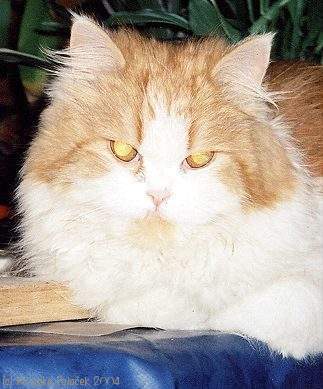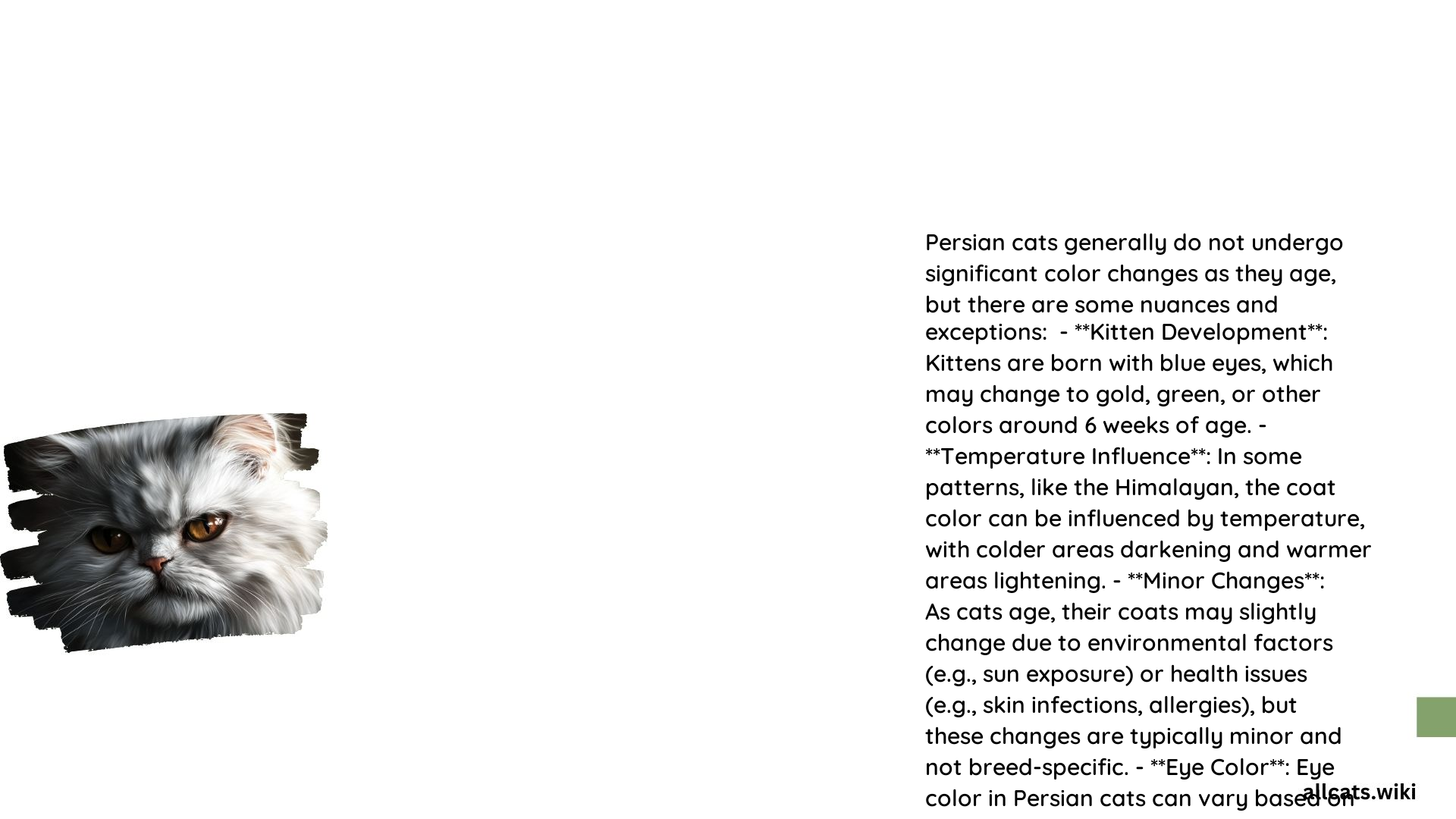Summary

Persian cats are known for their beautiful and diverse coat colors, which can change over time due to various factors. This article explores the causes of Persian cat color change, including genetic factors, age-related changes, and environmental influences. It provides a detailed understanding of the natural color transformation processes that these felines undergo, as well as the impact of sunlight, temperature, and diet on their coat appearance.
What are the Causes of Persian Cat Color Change?

Genetic Factors
The colors and patterns of Persian cats are primarily determined by their genetics, involving several key genes that interact to produce the various hues. These include the basic color genes, dilution genes, inhibitor genes, and tabby/agouti genes, all of which play a role in shaping the cat’s appearance.
Age-Related Changes
Persian kittens often undergo color changes as they mature. This includes changes in eye color, the appearance of “clarity” spots on their heads, and the maturation of their overall coat pigmentation, which can deepen or lighten over time.
Health-Related Issues
While less common, certain health issues can also influence the coat color of Persian cats. For example, the white-spotting gene can interfere with the development of the inner ear, leading to deafness in some white cats.
What are the Natural Color Changes in Persian Cats?
Age-Related Natural Processes
As Persian cats age, they experience natural color changes, such as the transition from their juvenile coat to their adult coat, which can be softer and less dense initially before becoming thicker and more vibrant.
Typical Timeline
The timeline for these natural color changes in Persian cats is as follows:
– Eye color change: Around 6 weeks of age
– Clarity spot disappearance: By 8 to 10 months of age
– Full coat maturation: Generally by 1 to 2 years of age
How Do Environmental Factors Affect Persian Cat Color Change?
Sunlight Exposure
Prolonged exposure to sunlight can cause fading of the coat colors, especially in darker shades like black and blue, as the UV rays break down the melanin in the hair shaft. White Persian cats are particularly susceptible to sunlight-induced discoloration, which can lead to a dingy or yellowed appearance.
Temperature Variations
Unlike some other cat breeds, temperature does not significantly affect the coat color of Persian cats, as they do not have temperature-sensitive mutations that influence their coloration.
Diet
While a balanced diet rich in nutrients is essential for maintaining the health and vibrancy of a Persian cat’s coat, the cat’s fundamental color will not be altered by dietary factors.
